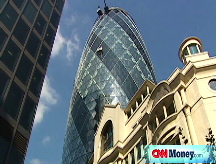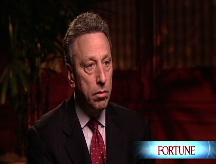Obama's paycheck bonus
You might not get a raise next year. But if the economic stimulus ideas being floated are any indication, you might get more money on payday anyway.
NEW YORK (CNNMoney.com) -- For many cash-strapped workers, Barack Obama's plan to stimulate the economy could mean more take-home money in their paychecks.
While details remain unclear, the president-elect's recovery proposal is likely to include a tax cut to boost spending. Exactly how much of a break that could mean for workers depends on how the tax cut is structured.
But back-of-the-envelope calculations suggest in some scenarios it could be anywhere from an extra $83 to $166 per paycheck during the first quarter of the year.
David Axelrod, a top adviser to Obama speaking Sunday on NBC's "Meet the Press," said Obama had promised a middle class tax cut and that his economic recovery package will include "a portion of a tax cut that will become part of the permanent tax cut he'll have in his upcoming budget."
On the campaign trail, Obama proposed a number of tax cuts for middle- and low-income households, including an increase in the earned income tax credit for low-income families and an increase in the Hope credit to pay for education expenses. He also proposed exempting seniors with income under $50,000 from having to pay income tax.
But the proposal most likely to get money into the hands of the greatest number of taxpayers quickly is some form of Obama's proposed Make Work Pay Credit.
The credit would essentially work as a payroll tax credit equal to $500 a year for individuals and $1,000 for couples. And the money could be delivered fairly quickly simply by having employers reduce the tax withholding in a person's paycheck.
The full credit would be limited to those making $75,000 or less ($150,000 or less for couples). Individuals making between $75,000 and $85,000 (and couples making between $150,000 and $170,000) would get a partial credit.
The credit also would be refundable, meaning that even tax filers without any tax liability -- typically very low-income workers -- would receive one.
Assuming a worker gets a paycheck every two weeks, a $500 tax break amounts to $19.23 extra a paycheck. A $1,000 break for couples is the equivalent of $38.46 per pay period.
But those amounts could rise if the full tax break is given during the first part of the year. Generally speaking, "the potential stimulus effect is bigger the earlier in the year that you give it," said economist Gary Burtless, a senior fellow at the Brookings Institution.
One approach could be to give workers an advance on the money so that they'd receive the full $500 or $1,000 over the course of the first quarter. That could mean an extra $83 a paycheck for individuals or $166 for couples, assuming they get six paychecks between January and March.
Or that amount could be increased further if the economic recovery package calls for the tax credit to be in place for two years. In that case, if workers got an advance on two years' worth of credits, that would double the extra money in their paychecks.
Whether a temporary tax cut is spread out over the year, given in advance over the first quarter or dispensed as a one-time lump sum, there is a question about just how effective it will be in stimulating the economy.
Generally speaking, economists say, permanent tax breaks boost the economy more. Why? Because consumers feel freer to spend it rather than save it since they know it's a sum they'll get every year.
Vice President-elect Joe Biden said last week the stimulus tax cut would be a "down payment on the tax relief that we promised for the strapped middle class." So the promise of permanence may have its own stimulus effect. But considering that Congress hasn't weighed in on the issue, there's no guarantee.
Early evidence on the $100 billion in stimulus checks sent out earlier this year suggest that consumers saved more of their rebates than they spent. During the second and third quarters, when most of the stimulus money landed in consumers' bank accounts, the personal savings rate jumped over the first quarter.
But the numbers are still preliminary and given the financial chaos that erupted in late summer, it's hard to sort out what role the rebates played.
"Everyone was told we're in the worst financial crisis in decades so it could be that the savings rate would have gone up anyway because consumers weren't making big-ticket purchases [and put off spending] on anything that can be plausibly postponed," Burtless said.
Of course, consumer sentiment, if anything, is worse now.
Should the Obama team opt to propose a temporary payroll tax credit, there's nothing saying they couldn't make it worth more than $500 per worker. Nothing, that is, except the cost to federal coffers.
As it is, the Tax Policy Center estimates the cost of the Make Work Pay Credit would be $115 billion over two years ($49 billion in 2009 and $66 billion in 2010).
The total cost of the stimulus package, meanwhile, is expected to approach $800 billion. But that includes the many other elements that Obama's economic team has said would be included, namely spending on infrastructure, energy, education, health care and state aid.
Given that the country's deficit could hit $1 trillion before any money is spent on stimulus and the government to date has committed nearly $8 trillion in one form or another to stabilizing the financial system, ratcheting up the cost of any one stimulus item may not be a slam dunk. ![]()






